About
The generation of induced pluripotent stem cells (iPSCs), especially the generation of patient-derived pluripotent stem cells suitable for disease modelling in vitro, opens the door for the potential translation of stem-cell related studies into the clinic.
Successful replacement, or augmentation, of the function of damaged cells by patient derived differentiated stem cells would provide a novel cell-based therapy for diseases. Since iPSCs resemble human embryonic stem cells (hESCs) in their ability to generate cells of three germ layers, patient-specific iPSCs offer definitive solutions for the ethical and histo-incompatibility issues related to hESCs. Indeed human iPSC (hiPSC)-based autologous transplantation is heralded as the future of regenerative medicine.
One of our aims is to generate and correct disease-specific hiPSCs for disease modelling and drug screening. The combination of gene-editing based methodologies together with the development of novel protocols for cell differentiation into relevant tissues/organs, provides a unique scenario for modelling disease progression, and the identification of molecular and cellular mechanisms leading to organ regeneration (Figure 1). In this regard we are particularly interested in generation of transgene-free and disease free patient derived hiPSCs for disease modelling and the discovery of novel therapeutic targets.
We believe that the recovery of tissue function should not be restricted to the development of cell replacement therapies. In this regard, in our laboratory we take advantage of organisms that possess the ability to regenerate such as zebrafish, in order to understand which molecular and cellular pathways lead to organ regeneration.
Surprisingly, studies in neonatal mice have demonstrated that soon after birth this organism posses the capability to regenerate its heart. Taking advantage of such preliminary observations we are translating such analysis in order to understand if the mammalian neonatal kidney still posses the capability to regenerate, and more importantly, if we are able to dissect the epigenetic and cellular mechanisms leading to those responses.
Lastly, and in an effort to fully develop in vitro and ex vivo platforms for organ regeneration, in our lab we are focused in the development of reporter cell lines for different transcription factors essential for tissue-specific commitment and differentiation (i.e: renal and cardiac lineages). The possibility to combine pluripotent stem cell lines together with decellularized matrices, functionalized biomaterials and ex vivo organoids offers and unprecedented opportunity for the immediate generation of patient-specific in vitro and ex vivo platforms for disease modelling and organ regeneration (Figure 2).
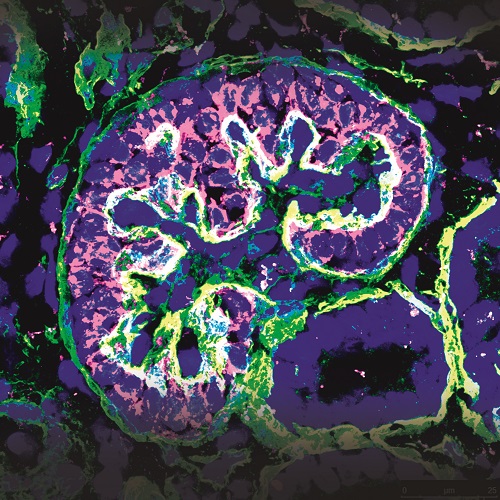
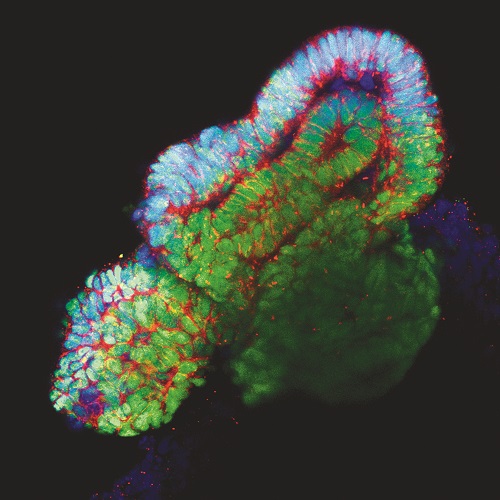
Staff
Projects
| NATIONAL PROJECTS | FINANCER | PI |
|---|---|---|
| Bioengeniería para mejorar la salud mediante de organoides y bioimpresión 3D (2021-2023) | MINECO – Plataformas ISCIII de apoyo a la I+D+I en Biomedicina y Ciencias de la Salud | Núria Montserrat |
| CARDIOPRINT Biofabricación avanzada multifunción en 3D para la generación de tejido cardiaco terapéutico a escala humana diseñado por ordenador (2021-2024) | MICIU, Proyectos de I+D+i en líneas estratégicas | Núria Montserrat |
| CAKUTORG Desarrollando nuevas estrategias para entender y tratar las anomalías congénitas del riñón y del tracto urinario mediante organoides (2021-2024) | MICIU, Retos investigación: Proyectos I+D | Núria Montserrat |
| Identifying SARS-CoV-2- host cell interactions exploiting CRISPR/Cas9 engineered human organoids: through the development of specific therapies against COVID19 (2020-2022) | FBBVA | Núria Montserrat |
| CHONDREG · Identification of the epigenetic mechanisms preventing chondrocyte de-differentiation: generation of novel therapeutic strategies for the treatment of cartilage chronic osteochondral lesions | CIBER | Nuria Montserrat |
| Infarto de miocardio en jóvenes. Factores epigeneticos y nuevos marcadores de riesgo cardiovascular. Efecto de la modulación de la expresión de microRNAs y long-non coding RNAs | ISCIII | (Collaborator) |
| INTERNATIONAL FUNDED PROJECTS | FINANCER | PI |
|---|---|---|
| ENGIORG Engineering kidney organoids to study the interplay between Tissue Mechanics and Metabolism: from development to disease (2021-2026) | European Commission | Núria Montserrat |
| ECaBox ECaBox «Eyes in a Care Box»: Regenerating human retina from resuscitated cadaveric eyes (2021-2025) | European Commission, FET OPEN | Núria Montserrat |
| Engineering functional human kidneys and urinary tracts (2021-2024) | Wellcome Leap Solicitation for Humans Organs, Physiology and Engineering (HOPE) | Núria Montserrat |
| BRAV3. Computational biomechanics and bioengineering 3D printing to develop a personalized regenerative biological ventricular assist device to provide lasting functional support to damaged hearts (2020-2024) | European Commission | Núria Montserrat |
| MAD-CoV 2 · Modern approaches for developing antivirals against SARS-CoV 2 (2020-2024) | European Commission | Núria Montserrat |
| R2U-Tox-Assay · Ready-to-use Toxicity Screening Assay based on iPS-Technologies (2020-2022) | EIT Health | Núria Montserrat |
| PRIVATELY FUNDED PROJECTS | FINANCER | PI |
|---|---|---|
| SYSTORG Exploiting organoid model systems to explore systemic conditions worsening COVID19: merging cellular and genetic engineering (2021-2024) | Fundació La Marató de TV3, TV3-Projectes de recerca La Marató TV3 | Núria Montserrat |
| Identificació de noves dianes terapèutiques i biomarcadors de progressió del càncer de ronyó a través de models organoides i xenoempelts genèticament dissenyats per CRISPR (2020-2023) | Fundació La Marató de TV3, TV3-Projectes de recerca La Marató TV3 | Núria Montserrat |
| REPIRE · Regenerating photoreceptors in human retinal organoids to establish a treatment for Retinitis Pigmentosa (2018-2021) | Fundación Bancaria «La Caixa» | Núria Montserrat |
| FUNDRAISING PROJECTS | FINANCER | PI |
|---|---|---|
| Programa Faster Future 2020: COVID-19 (2021) | Fundraising | Núria Montserrat |
| FINISHED PROJECTS | FINANCER | PI |
|---|---|---|
| Identification of Kidney Cancer progression targets and biomarkers through CRISPR-engineered organoids and xenograft mouse models (2019-2020) | Fundació La Marató de TV3 | Núria Montserrat |
| Generation of Isogenic Models of Clear Cell Renal Cell Carcinoma (ccRCC) using CRISPR-engineered Kidney Organoids, for the identification of diagnostic biomarkers (2017-2021) | Fundación AECC | Núria Montserrat |
| EPIORG · Cómo modelar la Nefropatía Diabética: restableciendo el epigenoma en organoides renales diabéticos inducidos (2018-2020) | MINECO, Retos investigación: Proyectos I+D | Núria Montserrat |
| MECHANORG · Como integrar señales mecánicas y metabólicas en organoides renales para el modelado de patologías humanas (2019-2020) | MINECO, Acciones Dinamización Europa Investigación | Núria Montserrat |
| Modelling Diabetic Nephropathy targeting DNA methylation: engineering the epigenome in kidney (2019-2020) | EFSD European Foundation for the Study of Diabetes | Núria Montserrat |
| REGMAMKID · How to regenerate the mammalian kidney (2015-2021) | European Commission, ERC-StG | Núria Montserrat |
| REPROMICRO · Reprogramacion y regeneracion tisular a partir de microvesiculas derivadas de celulas madre de pluripotencia inducida (2017-2019) | Ministerio de Economía y Competitividad, Explora Ciencia | Nuria Montserrat |
| Desarrollo de nuevas estrategias para el tratamiento de la enfermedad renal (2015-2017) | MINECO | Nuria Montserrat |
| TRATENFREN · Desarrollo de nuevas estrategias para el tratamiento de la enfermedad renal (2015-2017) | MINECO, Retos investigación: Proyectos I+D | Nuria Montserrat |
| Regenerative medicine for Fanconi anemia: generation of disease-free patient-specific iPS (2013-2016) | Fundació La Marató de TV3 | Nuria Montserrat |
| ACE2-ORG · Development of a human cellular plaform unveilling Angiotensin-converting enzyme 2 (ACE2) – sars-CoV-2 interactions (2020-2021) | ISCIII | Núria Montserrat |
| Red TERCEL · Red de Terapia Celular (2017-2021) | MINECO, ISCIII | (Collaborator) |
| EPIORGABOLISM Diabetic nephropathy modelling in hESC-derived 3D (2019-2021) | European Commission, MARIE CURIE – IF | Carmen Hurtado |
Publications
Equipment
- Real Time QuantStudio 5
- SimpliAmp thermocycler
- Eppendorf 5415D centrifuge
- Allegra X-15 R centrifuge
- Gyrozen 1248 centrifuge
- BioUltra 6 Telstar culture Hood 2x
- AH-100 Telstar primary culture Hood
- Binder CB 60 incubators 2x
- Controltecnica ASTEC SCA 165 incubator
- Controltecnica ZC 180 incubator
- Bioruptor Pico sonicator
- Thermomixer C thermal block
- Leica DMS1000 and DMIL Led microscopes
- Leica DMi1 microscope
- Leica MZ 10F magnifying glass
- Safe Imager 2.0 transilluminator
Collaborations
- Juan Carlos Izpisua Belmonte
Salk Institute for Biological Studies - Dr. Josep Maria Campistol Plana
Experimental Laboratory of Nephrology and Transplantation, Hospital Clínic, Barcelona - Peter Hohestein
The Roslin Institute, University of Edinburgh - Dr. Pere Gascón Vilaplana
Head of Oncology Service/Molecular and Translational Oncology Laboratory, IDIBAPS - Gloria Calderon
Embryotools SL - Pura Muñoz Cánovas
Departament de Ciències Experimentals i de la Salut, Universitat Pompeu Fabra - Dr. Pedro Guillén
Director Clínica Cemtro, Madrid - Dr. Francisco Fernández Avilés
Head of Cardiology Service, Hospital General Universitario Gregorio Marañón, Madrid - Dr María Eugenia Fernández
Unit of Cell Production, Hospital Gregorio Marañón, Madrid - Joaquin Gutiérrez Fruitós
University of Barcelona - Dr. Pere Roca-Cusachs
IBEC - Dr. Elena Martínez
IBEC - Dr. Cristina Eguizabal Argaiz
Centro Vasco de Transfusion y Tejidos Humanos (CVTTH), Bizkaia - Dr. Antonio Alcaraz
Head of Urology, Hospital Clínic, Barcelona - Dr. Oriol Casanovas
Head of Tumour Angiogenesis Group, IDIBELL
News
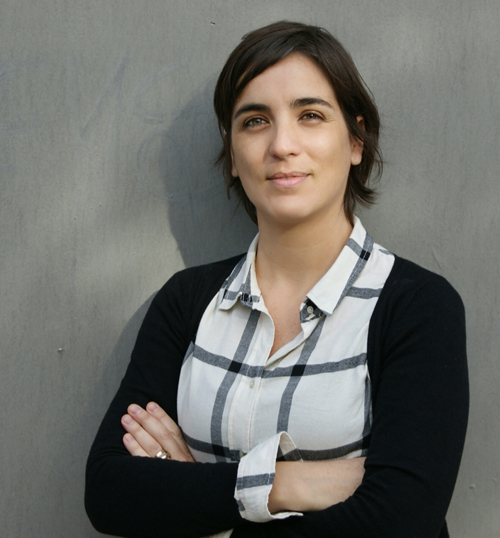
Núria Montserrat habla sobre medicina regenerativa
Nuria Montserrat habla de medicina regenerativa en un programa de radio para hablar sobre el primer trasplante de retina creado en un laboratorio y no de un donante.

La barcelonesa Núria Montserrat representa al Consejo Europeo de Investigación en el encuentro del Foro Económico Mundial en China
La investigadora Núria Montserrat acompaña al presidente del Consejo Europeo de Investigación (ERC), junto a una selección de los mejores científicos europeos, a la cita conocida como Davos de Verano organizada por el Foro Económico Mundial (WEF). La experta ha participado en varios foros sobre cómo trabajar para un futuro más próspero, y ha explicado cómo la regeneración de órganos que investiga en el Instituto de Bioingenería de Catalunya (IBEC) puede ayudar en la lucha contra el cáncer. El Foro de Nuevos Líderes en Ciencia, también conocido como el Davos de Verano, es uno de los acontecimientos que reúne a las mentes más brillantes del planeta para discutir sobre temas relacionados con la investigación, liderazgo, e innovación científicas.

10 avances médicos que revolucionarán el futuro
Nuria Montserrat y Pere Roca-Cusachs entrevistados en el artículo «10 avances científicos que revolucionarán el futuro» del diario Ara, hablando sobre impresión de tejidos 3D y mecanobiología.
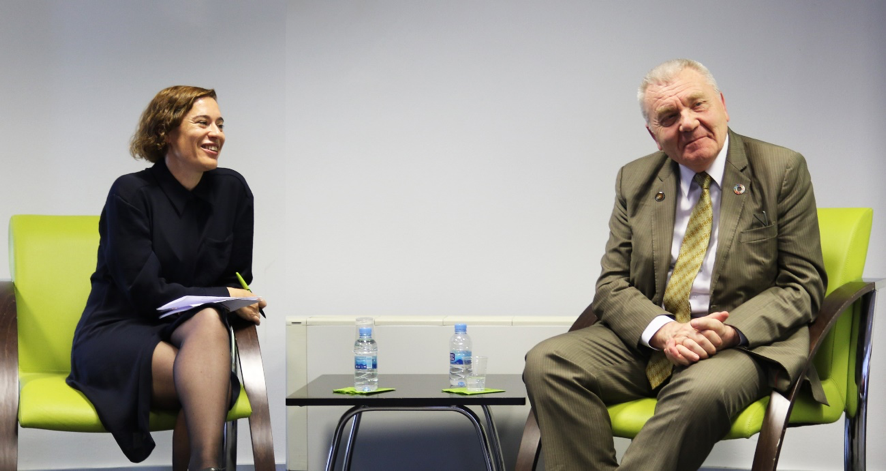
El presidente del Consejo Europeo de Investigación visita el IBEC
El Presidente del Consejo Europeo de Investigación (ERC), Jean-Pierre Bourguignon, visitó el pasado 15 de mayo el Instituto de Bioingeniería de Cataluña (IBEC). El evento fue inaugurado por el director de IBEC, Josep Samitier, quien presentó una visión general de la investigación de vanguardia llevada a cabo en el Instituto en los campos de la bioingeniería y la nanomedicina. Posteriormente, los investigadores con concesión de fondos ERC que trabajaban en IBEC tuvieron la oportunidad de explicar cómo estas subvenciones habían impactado positivamente en sus carreras profesionales, y establecieron un diálogo con el Presidente del ERC sobre el pasado, el presente y el futuro del Consejo Europeo de investigación
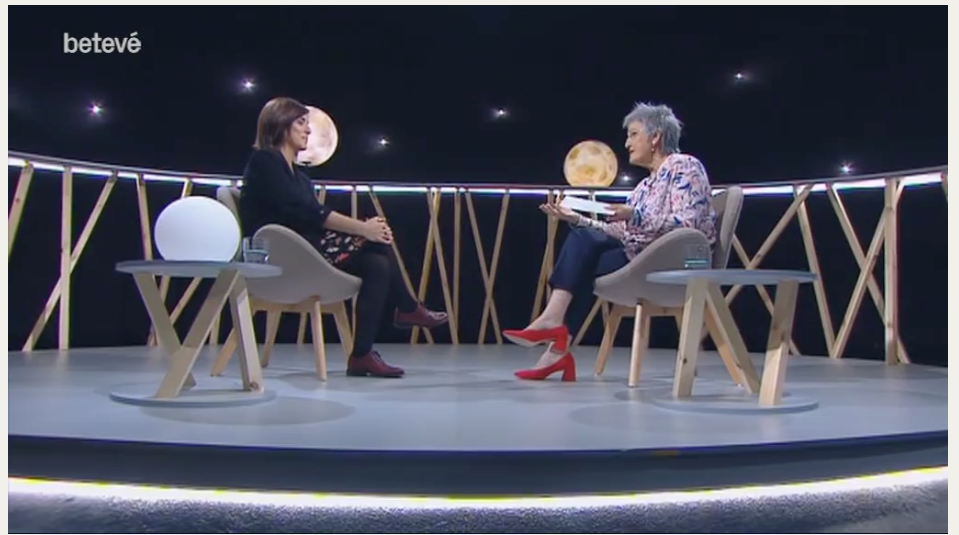
Núria Montserrat: “ Todavía no entendemos del todo cómo se desarrollan las células”
El pasado viernes, Núria Montserrat fue invitada en el programa Terrícoles de la Betevé donde conversó con la periodista Milagros Pérez sobre órganos y tejidos artificiales, células madre, bioimpresoras 3D y bioinformática, entre otros temas.
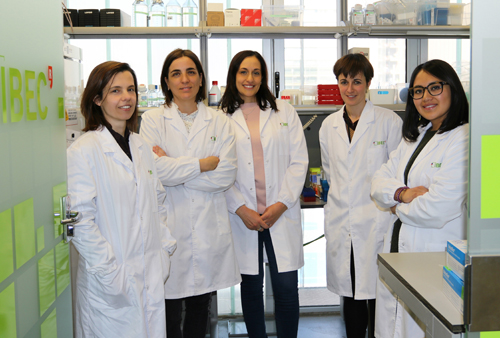
Investigadores del IBEC generan minirriñones vascularizados a partir de células madre humanas
Investigadores del IBEC han creado por primera vez cultivos tridimensionales -organoides- a partir de células madre pluripotentes, que se asemejan a tejido embrionario de riñón humano durante el segundo trimestre de gestación.Mediante el uso de biomateriales que mimetizan el microambiente embrionario los investigadores también han logrado que estos minirriñones presenten características relevantes para su uso inmediato en el modelado de patologías renales. En un estudio publicado ayer en la revista Nature Materials se describe cómo investigadores del IBEC han generado organoides, o miniórganos, que se asemejan al riñón embrionario humano durante el segundo trimestre

El IBEC participa en la primera Bienal Ciudad-Ciencia 2019
El IBEC es una de las fuerzas impulsoras de un importante festival científico que tendrá lugar en Barcelona este año. El evento se presentó ayer en rueda de prensa en el Anfiteatro Anatómico de la Real Academia de Medicina. Esta iniciativa está organizada por el Ayuntamiento de Barcelona junto con otros centros de excelencia científica. Ciutat-Ciència es una iniciativa promovida por el Institut de Cultura de Barcelona (ICUB) y organizada por un comité de siete investigadores, entre ellos Núria Montserrat, investigadora principal del IBEC. El evento Ciutat-Ciència se concentrará entre los días 7-11 de febrero donde se presentarán los últimos avances científicos a los ciudadanos y fomentará el debate y la opinión.

Dos Júniors se consolidan como Group Leaders
Lorenzo Albertazzi y Núria Montserrat, Group Leaders Júnior del IBEC, seleccionados en el Programa Tenure Track 2015, se han consolidado conéxito como Group Leaders desde el 1 de enero de 2019, después de ser evaluados positivamente por el ISC. El Programa Tenure Track del IBEC tiene como objetivo sar soporte al desarrollo profesional, apoyando a jóvenes investigadores a establecer sus propias líneas de investigación independientes. También se consideran otros factores, como por ejemplo el valor añadido que aportan sus proyectos al actual programa de investigación del IBEC, así como su capacidad de liderazgo y gestión eficiente del grupo. Los primeros cuatro Group Leaders Júnior seleccionados por el Programa el año 2012, —Eduard Torrents, Elisabeth Engel, Pere Roca-Cusachs y Xavier Fernández-Busquets— se consolidaron con éxito como Group Leaders Sènior el 1 de enero de 2017.
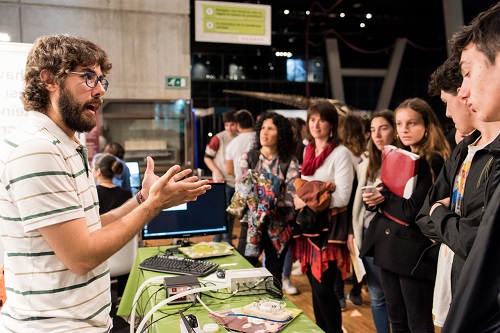
El proyecto de regeneración de órganos y CRISPR de IBEC gana la votación de Fira Recerca en directe
Este año un proyecto de IBEC ha ganado la encuesta pública de la Feria de investigación en directo 2019 por el proyecto más popular, con el 26,94% de los votos. «CRISPR y la regeneración de órganos» es una de las 11 actividades que se realizarán en la Feria de investigación del 6 al 14 de Marzo del 2019 en el CosmoCaixa. Este festival anual de la ciencia, organizado por el Parc Científic de Barcelona en colaboración con Obra Social “la Caixa”, es una oportunidad para que grupos de investigación y universidades muestren lo último en investigación con espacios de demostración y actividades para captar así la atención de los visitantes y del público en edad escolar.

Cinco investigadores del IBEC galardonados en la ceremonia de las becas de «la Caixa»
Cinco investigadores del IBEC recibieron ayer becas de «la Caixa» a las convocatorias de investigación e innovación. Anna Labernadie e Irene Marco, ambas estudiantes postdoctorales en los grupos del IBEC «Integrative Cell and Tissue Dynamics» y «Biosensors for Bioengineering», respectivamente, han obtenido las becas en la primera convocatoria del programa Junior Leader de “la Caixa”, que ayuda investigadores e investigadoras destacados, de cualquier nacionalidad, que quieran continuar su carrera de investigación en territorio español o portugués. Anna ha sido una de las 10 estudiantes postdoctorales en conseguir una beca en la modalidad “Retaining” para candidatos que ya residen en España, e Irene ha sido galardonada con una de las 20 becas en la modalidad “Incoming” para candidatos residentes en el extranjero.
